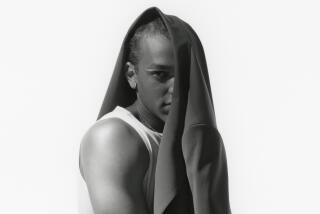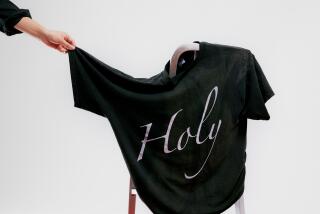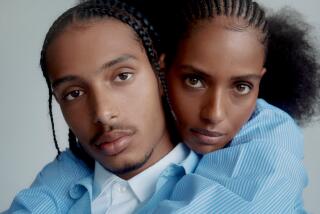Fit to Be Tied Delivers the Goodies
- Share via
IRVINE — The haberdashery is not just an endearing memory of yesteryear. Some style-conscious clothiers are attempting to bring back the personal service and tailored quality that were so integral to the men’s shops of old.
With its handmade line of silk neckties, handkerchiefs and vests, Fit to Be Tied is one of these new sources that provide the fashionable modern man with good old-fashioned service by taking the merchandise to the customer’s home or office.
“Everything now is geared toward convenience, self-service,” laments Fit to Be Tied’s Shawn Harper. “Whatever happened to the days when salespeople catered to the customer?”
With that in mind, Harper and his four partners are assertively targeting “men who dare to be different,” he says. “There’s not many of those type of men out there, but such is life.”
The label’s core customer is different because of physical characteristics as well. Fit to Be Tied caters to the big and tall man. “Most stores focus on the average man,” says co-owner Argusta White. “We cater to the big and tall man who is too often forgotten.”
Whereas the average tie is 64 inches, the label offers ties reaching 69 inches.
Says Harper: “There’s only a certain number of shirts and suits a man can buy. But accessories--they make the individual and change a mood. A tie can give a suit a different perspective.”
The label’s ties might serve for every day, but they are hardly average. Each piece is double-lined for a better knot and hang. “The interface lining is key to its durability and it lays better without flopping around,” says partner Lovell Perry Jr. The tip is doubled and squared off on the rear side, a rare finish even among high-ticket designer ties.
The cravats sell for $50 to $100. Also available are bow tie, cummerbund and handkerchief sets that sell for $75. And Fit to Be Tied has recently expanded into vests, which start at $150.
“Each tie is a conversational piece,” Perry says. “We work with the customer to give him what he wants, to coordinate items with his wardrobe. We want our customers to feel they’re not just buying a tie, but they’re being served.”
With the partners’ ongoing search for uncommon silk fabrics, the styles of ties and matching handkerchiefs or vests are endless. Currently, there are abstract shapes, animal prints, Hermes-inspired patterns, polka dots, paisley leaves, checks and cabbage roses. Ethnic prints, such as those akin to colorful, woven African cloth, are among the best sellers.
Perry founded Fit to Be Tied in May, 1991 after a friend in his Indianapolis neighborhood stitched up a tie. That spawned his idea to create a mobile service offering tailored ties and other accessories to professional men.
He met his future partner, Houston Wilson, while visiting a Marine buddy in Tustin in January of this year. “I fell in love with the ties,” recalls Wilson.
Then Lovell met with White, who had been selling men’s accouterments, and corralled fraternity brother Shawn Harper and his roommate Tim Lester to join the group. Harper, who is an offensive tackle for the Rams, and Lester, a running back for the team, are helping to expand the label’s big and tall market by appealing to athletes.
The menswear look in women’s clothing has opened another market for the Fit to Be Tied partners. Women, too, have been showing an interest in the ties, says Lovell.
With five heads at the helm, the Fit to Be Tied partners have laid out a future that will eventually include a full collection of men’s accessories and free-standing haberdasheries in cosmopolitan areas.
Even as the label negotiates exclusive deals with selected retailers, the thrust of sales will remain as a personal service, they say, with representatives continuing to visit the homes and offices of their customers.






